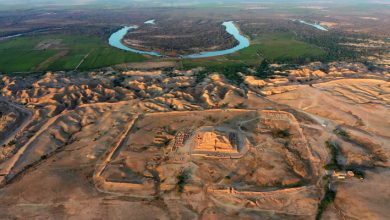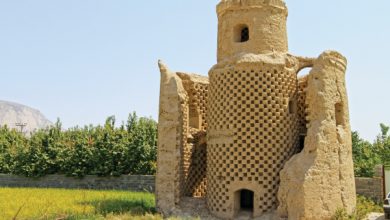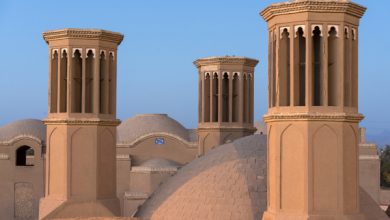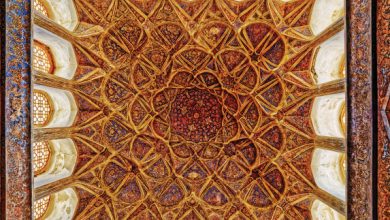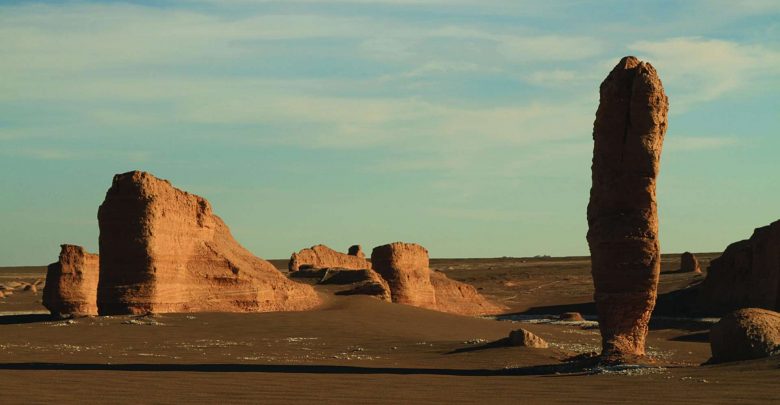
Due to its geographical location, the Lut desert has two sectors: habitable and uninhabitable. Due to the harsh and limited weather conditions, as well as rugged natural features, the inner regions of Lut have always been devoid of mankind’s presence and residence. However, the outskirts of Lut rely on the surrounding heights’ water resources and are therefore considered among the oldest human settlements.
The Lut desert represents an invaluable part of the lifestyle and a continuum of people’s livelihood. Such a result can be deduced from inspecting the rare unrivaled natural potentials of Lut which are in fact representative of its geological aspect, considering the Lut desert’s historical background of civilization, and also by taking a closer look at the monography of the environment’s social regions. Since aeons ago, those people have accepted the harsh weather conditions of Lut’s surrounding areas and through this co-existence, have left behind priceless cultural and economic artifacts that stem from the history of Iran and human society.
It is worth noting that the social region of Shahdad county and Takab town – located east of the Konaran and Poozekooh villages and west of the western edge of the Kalut area – are considered part of the western region of the Lut in terms of geography and natural circumstances.
Parts of the ancient history of Iran’s civilization are situated in multiple locations across Shahdad and the Takab plain, including: 5000-years old clay hydration networks; the world’s oldest subterranean streams such as the Lut Ghanat and Sefteh Keshit which are approximately 5000 years of age (we discovered these 6 years ago in the Takab plain in the course of Lut desert’s ecological studies); dozens of ancient historical sites such as the ruins of the Seljuk city of Dastjerd, Ghale Kohne, Rumuk Castle, Hushangi Castle, etc. Among the artifacts discovered in that ancient land is the 5000-years old bronze banner of Shahdad. It is, in fact, the world’s oldest bronze banner, dating back to the Bronze Age, which signifies a golden point in Lut’s historical geography.
Thanks to the efforts of the late Dr. Ahmad Mostofi, the mentioned regions’ historical and cultural heritage sites were identified and introduced. Subsequently, Ali Hakemi accompanied by his team (including Dr. Kaboli) conducted archaeological studies on the region for 9 years starting from 1968. Their efforts led to the identification of a valuable portion of the ancient history of Iran’s civilization. Despite that, archaeologists have yet to study the ancient civilization of western Lut thoroughly and completely; especially its pre-historic civilization and the ancient western Lut civilization which we have little knowledge of. On the other hand, the cultural and historical heritage sites of western Lut, including water management (especially engineering facilities for its transfer and usage), have not been included in serious research, recognition management, and monitoring plans.
I managed to register eco-geomorphological sites of the Tal-e Gazha region (Nebkha) on the list of national natural sites in 2013. Also, I completed and submitted most regions of Lut to the National Organization of Natural and Spiritual Heritage Registration and the Lut desert was added as number 203 to the country’s list of national heritage sites. The international registration of the Lut desert in the Biosphere Natural Heritage list bred the hope that in the near future in all fields, sustainable protection plans and ecological studies of cultural and natural values of the environment will be carried out to realize the geotourism industry’s development with the economic and social growth of local communities in mind.
Dozens of ancient sites that have survived since 6000 years ago testify to Lut desert’s diverse environment; particularly in the outskirts of western Lut in counties such as Bam, Golbaf, Anduhjerd, Shahdad and also the Takab plain and more so, historical heritage sites that have existed for thousands of years on the outskirts of eastern, north-eastern, northern, north-western and southern Lut. Harvesting wind power via constructing the ancient engineered structure of windmills (Asebad) in eastern and north-eastern Lut are characteristic of the ancient human knowledge of that region. These structures are among the oldest wind-powered mills in the world which, in fact, represent the diverse potential of the mystical land of Lut.
Lut’s atmosphere and the impact of that hyper-warm and arid environment on the formation of the Iranian plateau’s oldest civilization based on peace, justice, and generosity can be deduced from numerous factors. For instance: the variety of tribes, customs and traditions of the locals of Lut’s outskirts; their lifestyle in the arid and water-scarce conditions of the land; the production of priceless and diverse handicrafts by the locals; and also, Lut’s effect on the creation of traditions, culture, customs and the economy of local communities which is supported by the discovery of the world’s oldest bronze banner in Shahdad.
The tribes residing in the eastern outskirts of Lut are mainly of Baluch ethnicity; especially Narooei and Totazehi tribes. The residing Baluch lifestyle in the east of Lut is directly influenced by its geographical circumstances. While adhering to their tribal system of ethics, Baluch people are extremely kind and hospitable. They have always defended the country’s south-eastern borders and shown the utmost cooperation with scientists studying Earth and travelers since ages ago. In this respect, the late Malek Mohammad Narooei who lived in the Nokabad village (east of Rig-e Yalan) led Dr. Alfons Gabriel, the Austrian researcher, and his wife across the inner region of central Lut 80 years ago. By doing so, he offered his greatest service by introducing the European researchers to Lut desert’s internal situation.
The rest of this article is published in the 1st volume of Gilgamesh international edition
